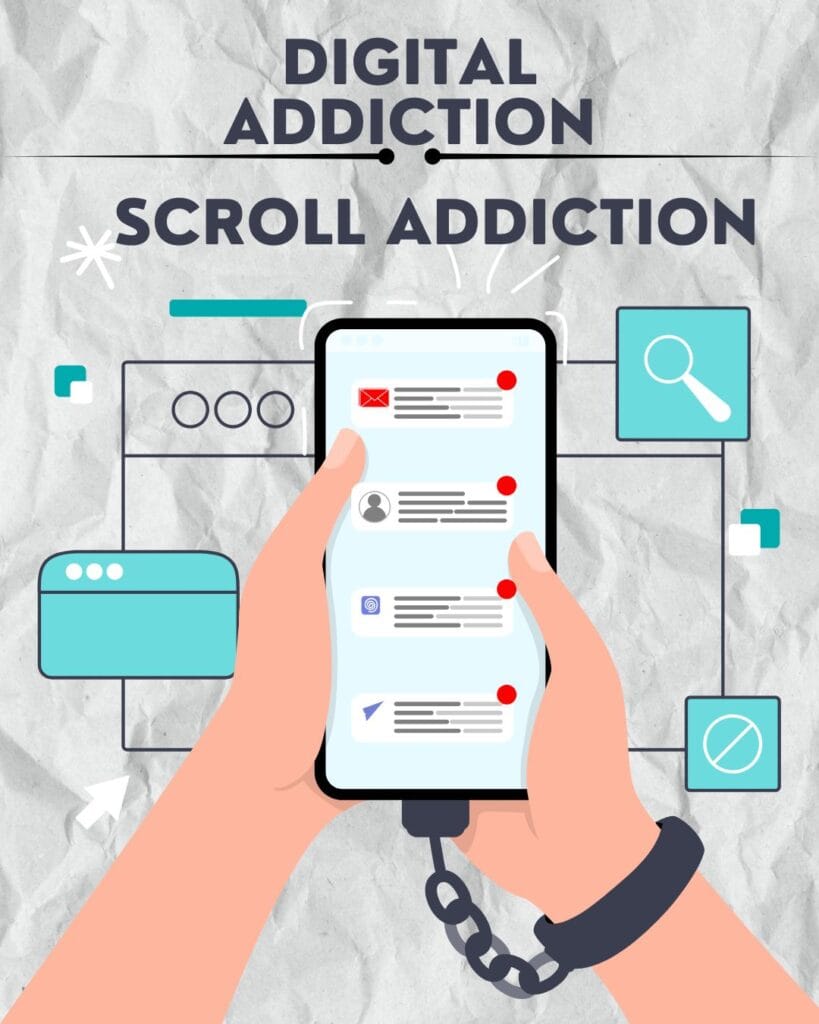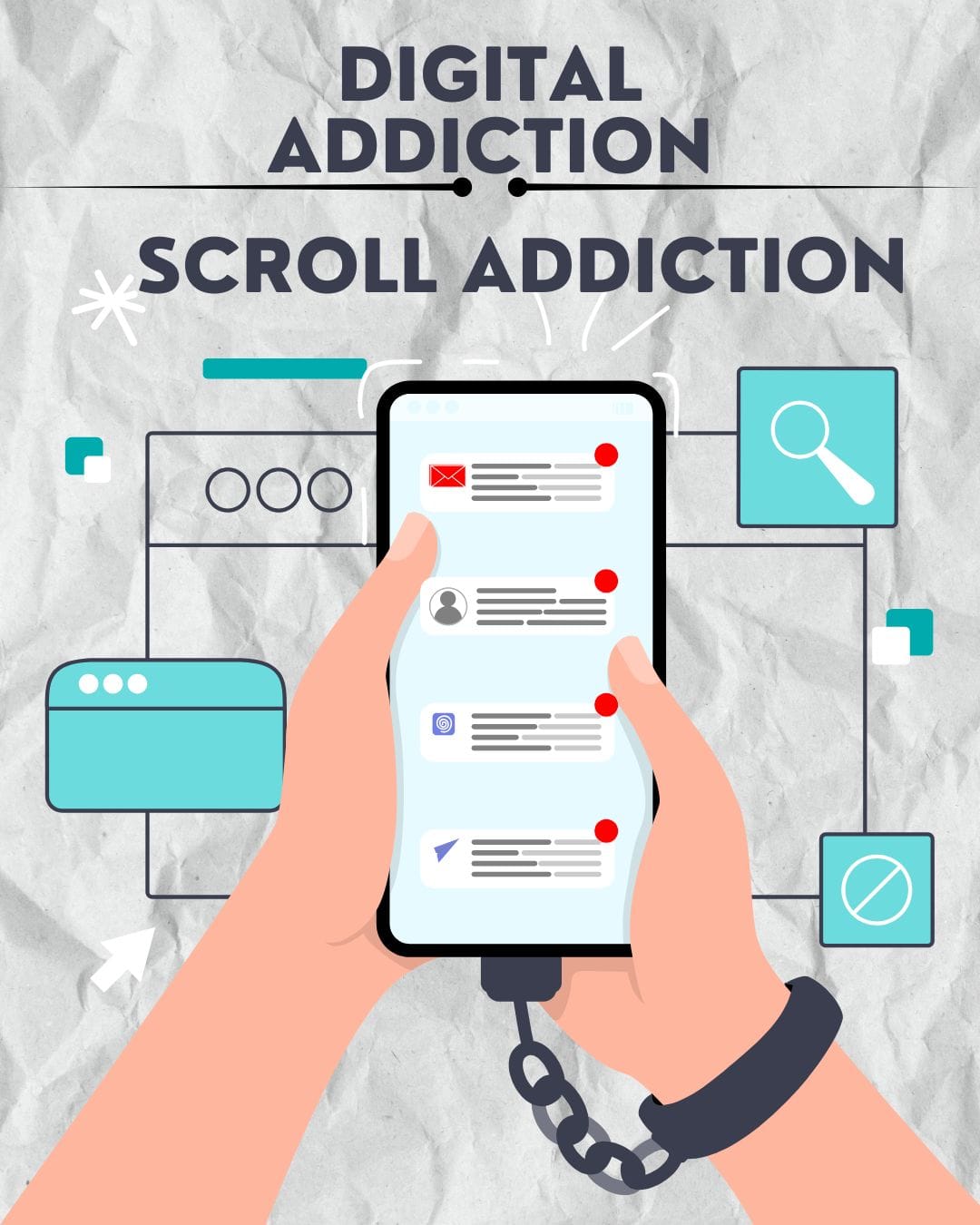Why You Can’t Stop Scrolling — And What AI Has to Do With It
Ever caught yourself reaching for your phone, telling yourself it’s “just for a minute”… and then suddenly it’s midnight?
You didn’t mean to spend the last hour watching cat videos, political debates, or oddly satisfying cleaning reels. But somehow, you did. Again.
Don’t worry — it’s not just you.
It’s your brain. And more importantly, it’s the invisible AI pulling the strings in the background.
Let’s talk about why scrolling has become our new digital reflex, and what role artificial intelligence plays in making it almost impossible to stop.

The Scroll Trap Starts With the Brain
At our core, humans are wired to seek rewards. Whether it’s the rush of a like on our photo, a hilarious video, or an unexpected news story, we crave that tiny hit of dopamine — the brain chemical that says, “Hey, that felt good. Do it again.”
Social media feeds, especially the “infinite scroll” kind, are designed to keep that reward cycle going. You swipe, you get something mildly interesting. Swipe again, and boom — something hilarious. Swipe once more, and now you’re emotional over a video of a soldier coming home. Every swipe is a lottery ticket, and your brain gets hooked on the chance that the next one might be even better.
But this isn’t just clever design.
This is engineered addiction, with artificial intelligence behind the curtain.
AI Is the Puppet Master of Your Feed
Here’s the thing most people don’t realize: your social feed isn’t random.
It’s not a casual assortment of posts from people you follow.
Every reel you watch, every video you don’t skip, every post you double-tap — it’s all being recorded and analyzed. Not by a person, but by powerful AI algorithms designed to understand what grabs your attention. These algorithms learn your preferences, your habits, and even your mood based on how you behave online.
And once they know what you like, they start feeding it to you — faster, smoother, and more relentlessly.
The more you scroll, the more the AI learns. The more it learns, the harder it becomes to stop.
You’re not being lazy or unmotivated.
You’re being outsmarted.
It’s Not Your Willpower — It’s the Algorithm
We often blame ourselves.
“I need more self-discipline.”
“I waste too much time. I should know better.”
But that’s like blaming a mouse for getting stuck in a maze designed to trap it.
Big tech companies spend billions to make their platforms irresistible. Behind every “you might like this” suggestion is an algorithm whose job isn’t to entertain you — it’s to keep you engaged. Because more engagement means more ads. And more ads mean more money.
It’s not about what’s good for you — it’s about what gets you to scroll, click, share, and stay.
The saddest part? The AI doesn’t care if the content makes you anxious, angry, or overwhelmed. If those emotions keep you scrolling, it’ll show you more of that.
The Side Effects No One Talks About
Most of us don’t realize how deeply this affects our minds — until it’s too late.
You sit down to read a book, and suddenly your attention slips after just two pages. You try to focus at work, but you find yourself checking your phone every ten minutes. You wake up and the first thing you reach for isn’t water or sunshine — it’s Instagram.
Sound familiar?
AI-driven scrolling isn’t just wasting our time.
It’s fragmenting our focus, shortening our attention spans, and, in many cases, damaging our emotional well-being.
And it’s happening so subtly that we hardly notice — until life starts to feel… foggy.
Is There a Way Out?
Yes. But let’s be honest — breaking free isn’t easy.
Not when your digital life is built around tools designed to keep you locked in.
But the first step is awareness.
Understanding that your feed isn’t neutral — it’s crafted.
Realizing that your attention isn’t weak — it’s targeted.
Accepting that the struggle isn’t just you — it’s all of us up against machines optimized to steal time.
Once you see that, you can start making changes.
Practical Ways to Reclaim Your Mind
Here are a few things you can try — not to fight technology, but to use it more intentionally:
🔹 Set app limits — Use your phone’s settings to control how long you spend on certain apps each day.
🔹 Turn off autoplay — Most videos keep playing by default. Disabling autoplay gives you the power to choose what to watch.
🔹 Use grayscale mode — This one’s surprisingly effective. Without bright, shiny colors, your feed becomes way less appealing.
🔹 Follow with purpose — Unfollow accounts that drain you. Curate a feed that informs or inspires instead of consuming your energy.
🔹 Schedule scroll time — If you want to scroll, do it consciously. Put a 15-minute timer on, scroll guilt-free, then stop.
A Glimmer of Hope: Can AI Help Too?
Here’s the twist: some developers are now using AI to fight AI.
New apps and digital wellness tools use AI to monitor your habits and gently nudge you toward balance. Some can tell when your scrolling becomes excessive and suggest breaks. Others can block certain content after a set time.
The future may not be about abandoning AI — but about making it work for us instead of against us.
Final Thoughts
This post isn’t meant to shame you. It’s not about quitting social media or going off-grid.
It’s about realizing that when you can’t stop scrolling, it’s not a personal failure — it’s a design feature. A feature powered by AI that’s optimized to keep you stuck.
But the good news?
Now that you know the game, you can choose how to play it.
Your attention is powerful. Don’t give it away for free.
Enjoyed this post?
Leave a comment or share it with someone who’s always “just checking their phone for a minute.”
Let’s help each other wake up — and scroll less, live more.

